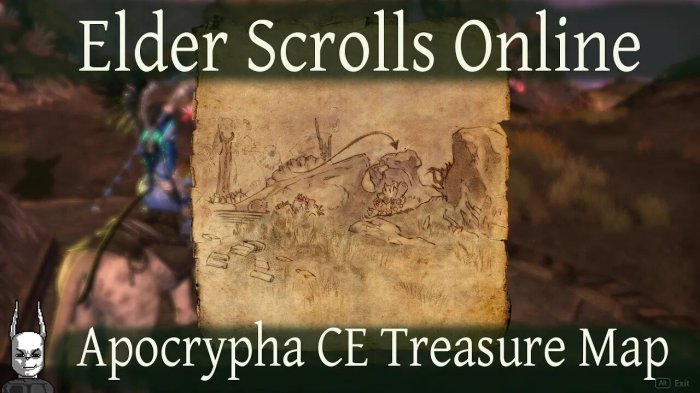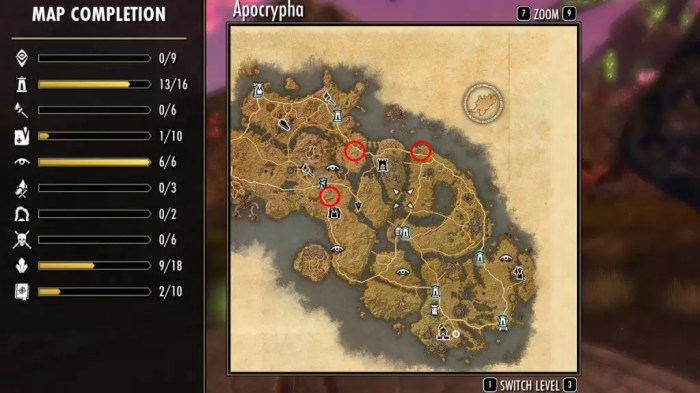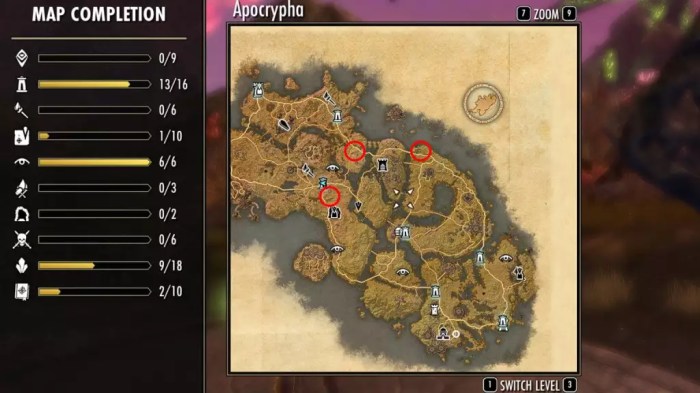Dive into the hidden depths of the Apocrypha, a treasure trove of ancient stories and wisdom that have captivated readers for centuries. It’s like discovering a secret map to a world beyond the ordinary, a world where angels walk among mortals and fantastical tales unfold.
Think of it like a super-secret society that only a select few have access to, but now, you’re invited to join the club.
The Apocrypha, a collection of books considered sacred by some but not included in the canonical Bible, holds a fascinating history. These texts, written between the 2nd century BCE and the 2nd century CE, offer a unique perspective on Jewish and Christian traditions.
Imagine, like finding a lost scroll that unlocks a whole new chapter in your favorite fantasy novel. You’ll uncover stories about incredible heroes, wisdom beyond measure, and mysteries that have puzzled scholars for ages.
The Apocrypha

The Apocrypha, a collection of ancient texts considered sacred by some but not others, holds a unique place within the history of Judaism and Christianity. These writings, often referred to as “hidden” or “secret” books, offer intriguing insights into the cultural and religious landscape of the ancient world, presenting alternative perspectives on familiar biblical stories and introducing new characters and narratives.
The Historical Context and Significance of the Apocrypha
The Apocrypha emerged during a period of intense cultural and religious change, a time when Jewish communities were grappling with the aftermath of the Babylonian exile and the rise of Hellenism. These texts reflect the challenges and opportunities faced by Jewish people living under foreign rule, seeking to preserve their identity and faith while adapting to new social and political realities.The Apocrypha’s significance lies in its contribution to the development of both Jewish and Christian traditions.
For Jewish readers, these texts provide additional perspectives on Jewish history, law, and ethics, offering insights into the lives and beliefs of their ancestors. For Christians, the Apocrypha offers alternative interpretations of biblical stories, presenting different views on salvation, prophecy, and the nature of God.
The Books Included in the Apocrypha
The Apocrypha includes a diverse range of literary genres, from historical accounts and wisdom literature to apocalyptic visions and devotional prayers. Some of the most well-known books include:
- Tobit: A story of a righteous man who faces adversity and ultimately triumphs through his faith and good deeds.
- Judith: A tale of a courageous widow who saves her people from a foreign invasion by using her intelligence and faith.
- Wisdom of Solomon: A philosophical treatise that explores the nature of wisdom, virtue, and the divine order.
- Sirach: A collection of proverbs and ethical teachings that emphasize the importance of living a righteous life.
- Baruch: A series of letters and speeches that address the challenges faced by Jewish communities during the Babylonian exile.
- Letter of Jeremiah: A letter purportedly written by Jeremiah to the exiled Jewish community, encouraging them to remain faithful to God.
- 1 Maccabees and 2 Maccabees: Historical accounts of the Maccabean Revolt, a Jewish uprising against the Seleucid Empire in the 2nd century BCE.
- Additions to Esther: Additional chapters added to the Book of Esther, expanding the story and highlighting the role of Esther and Mordecai in saving the Jewish people.
Interpretations and Uses of the Apocrypha Throughout History
The Apocrypha has been interpreted and used in a variety of ways throughout history. Some early Christians considered these texts to be canonical, while others rejected them. During the Reformation, Protestants largely rejected the Apocrypha, while Catholics continued to accept it as part of their biblical canon.
- Early Christianity: The Apocrypha played a significant role in the development of early Christian thought and practice. Many early Christian writers drew upon the Apocrypha for inspiration and theological arguments. For example, the story of Judith was often cited as an example of the power of faith and the importance of resisting oppression.
- Medieval Period: The Apocrypha continued to be studied and interpreted during the medieval period. The texts were often used in sermons, liturgical dramas, and other forms of religious art. For example, the story of Tobit was popularized in medieval art and literature, illustrating themes of charity, healing, and the power of prayer.
Ready to embark on an epic quest? “Apocrypha: A Treasure Hunt” throws you into a wild ride, full of twists and turns, where every clue is a puzzle waiting to be cracked. Want to join the adventure? Download And Listen Here to get started and dive into the mystery of “Apocrypha: A Treasure Hunt.” You won’t regret it, trust me!
- Modern Era: In the modern era, the Apocrypha has been the subject of renewed interest and debate. Some scholars have argued that the Apocrypha provides valuable insights into the social, cultural, and religious context of ancient Judaism. Others have explored the Apocrypha’s potential to offer alternative perspectives on biblical themes and to inspire contemporary readers.
So, you’re diving into Apocrypha A Treasure Hunt, huh? Ready for a wild ride, dude? You’ll need to be sharp, think outside the box, and maybe even call in a few favors to crack the code. Speaking of codes, you’ll want to check out The Diversity Recruiting Blueprint Your Guide To Crafting An Impactful Inclusion Hiring Strategy – it’s a treasure trove of strategies to make your team more diverse and inclusive, and that’s something you’ll need to succeed in Apocrypha A Treasure Hunt, trust me.
Uncovering the Secrets

The Apocrypha, a collection of ancient texts that didn’t make the cut for the official canon of the Bible, is more than just a historical footnote. It’s a treasure trove of fascinating stories, intriguing characters, and profound themes that offer a unique perspective on the world and our place in it.
Apocrypha A Treasure Hunt is like a wild goose chase, you know, all about digging deep and finding those hidden gems. It’s a real test of your knowledge, your grit, and your ability to connect the dots. It’s kinda like reading The Book of Bannonisms Musings from the Mind of Stephen K.
Bannon as composed by a fan of War Room Pandemic , trying to decipher the cryptic messages and uncover the hidden meaning behind the words. So, if you’re up for a challenge, and you’re ready to dive deep into the mysteries of the past, then Apocrypha A Treasure Hunt is definitely for you.
This hidden collection invites readers to embark on a captivating treasure hunt, uncovering the secrets that lie within its pages.
If you’re digging into the mysteries of the Apocrypha, you’re in for a wild ride. It’s like a treasure hunt for ancient knowledge, but instead of buried gold, you’re searching for wisdom and hidden stories. And if you want to level up your game in the world of ancient mysteries, check out The Way Of Wicca A 21st Century Guide to Wiccan Witchcraft Traditions Rituals & Magick From All Witch Paths Fire Moon Candles Crystals Tarot Herbal Spells & More Perfect For Solitary for some seriously cool insights into ancient traditions.
Once you’ve got a handle on the basics, you’ll be ready to crack the code of the Apocrypha and uncover its secrets.
Stories and Characters
The Apocrypha is a vibrant tapestry of stories and characters that offer a glimpse into the lives and beliefs of ancient communities. From the dramatic tale of Judith, a courageous widow who saves her people from an invading army, to the inspiring story of Susanna, a woman falsely accused of adultery who is ultimately vindicated, these narratives resonate with themes of faith, justice, and the triumph of good over evil.
Literary and Thematic Elements
The Apocrypha is not just a collection of stories; it’s a literary masterpiece that uses powerful language and evocative imagery to engage readers. The texts are filled with symbolism and allegory, offering a deeper understanding of the human experience.
These texts explore themes of divine intervention, human suffering, and the importance of faith, providing insights into the challenges and triumphs of life.
Symbolism and Allegorical Meanings
The Apocrypha is rich in symbolism and allegory, using these elements to convey deeper meanings and insights. The story of Tobit, for example, is filled with symbolic representations of divine guidance, the power of prayer, and the importance of charity.
Tobit’s journey is a metaphor for the challenges and rewards of faith, reminding readers that even in the darkest of times, hope and redemption are possible.
Closing Notes

So, buckle up and get ready for a journey into the Apocrypha, a treasure hunt that will ignite your curiosity and leave you wanting more. It’s like stumbling upon a hidden portal to a world where the impossible becomes possible.
These stories aren’t just words on a page; they’re gateways to a deeper understanding of ourselves, our beliefs, and the universe around us. Ready to embark on this adventure?
FAQ Guide
Is the Apocrypha part of the Bible?
The Apocrypha is considered part of the Bible by some Christian denominations, but not by others. It’s like a special edition book, some people love it, others not so much. It’s a matter of personal interpretation and belief.
What are some popular books in the Apocrypha?
Some of the most well-known books include 1 and 2 Maccabees, Wisdom of Solomon, Sirach, and Judith. Think of them like the “best-sellers” of the Apocrypha, full of intrigue and captivating stories.
Why should I read the Apocrypha?
The Apocrypha offers a unique perspective on religious history, provides insights into ancient cultures, and explores themes of faith, morality, and human experience. It’s like getting a behind-the-scenes look at a historical event or a glimpse into the lives of people long gone.

